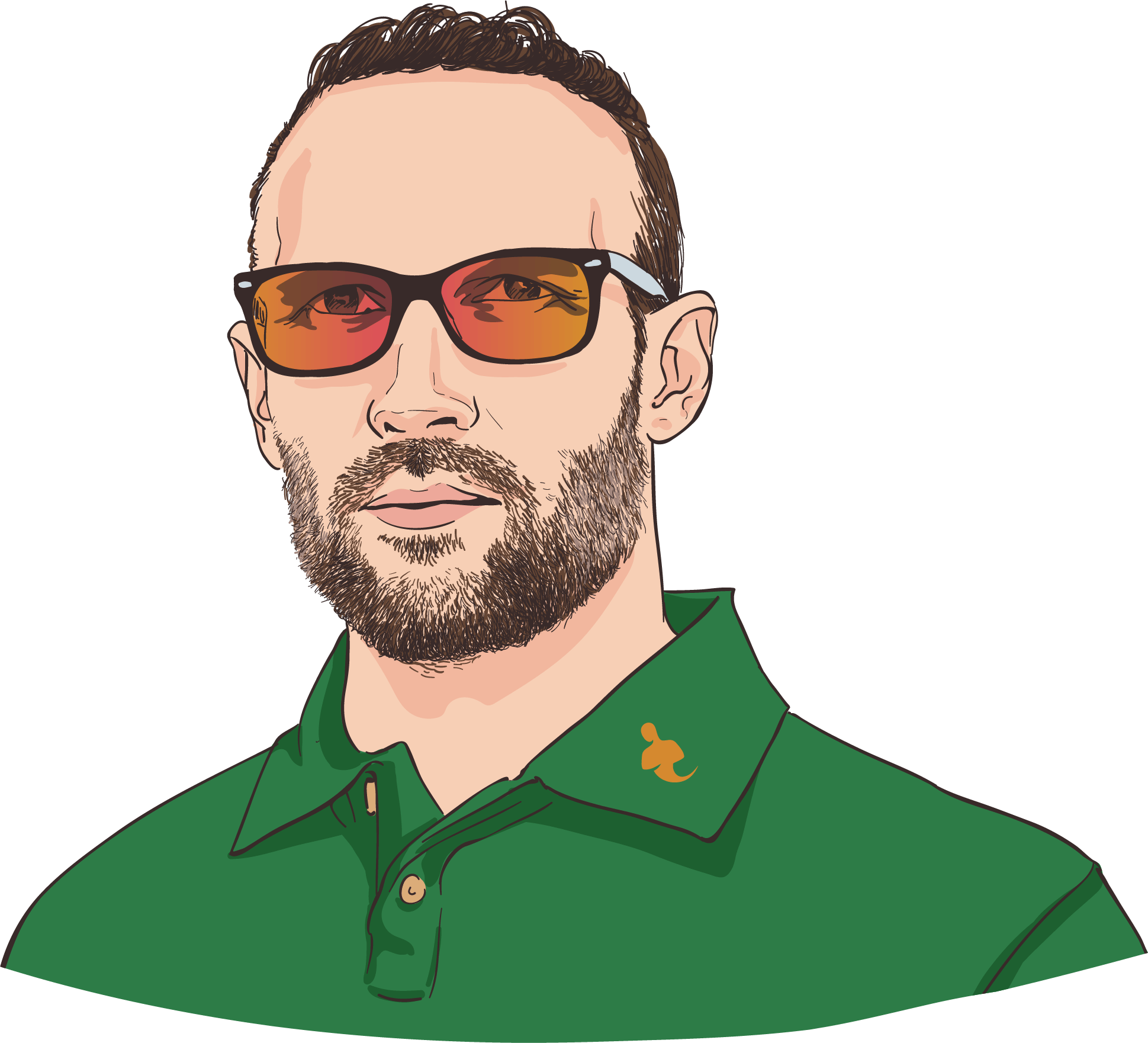You can’t please everyone, but when it comes to your customers, you better damn well try. How do top entrepreneurs handle unhappy customers? We asked some members of The Oracles, owners of wildly profitable businesses, for their tips. These are the strategies that they use.
Related: The Jimmy Fallon Guide to Customer Love
 1. Adapt to customer personality types.
1. Adapt to customer personality types.
If someone calls my office saying, “I bought the 67 Steps and didn’t see a change in my life after two weeks,” my customer support team will apply the P.A.S.E. personality system that I created:
- P (Practical)—People are logical. They might say, “I bought this for $39 and saw that I could buy it elsewhere for $29. I want a refund because of the $10 difference.” Respond with logic, lists and numbers. “You’re correct; our program is more expensive. Here are its nine features, which is why you paid extra.”
- A (Action)— People tend to be impatient and aggressive. They might say, “Hey, it’s not working fast enough.” Respond aggressively using action phrases like, “Get back in the program. Don’t give up!”
- S (Social)—People tend to want to talk a lot; they like interaction. Casually talk to them for 20 minutes and they’ll probably be back on board.
- E (Emotional)—People will probably be hurt or suspicious. They might say, “I bought this and didn’t get the login—are you trying to rip me off?” Use a lot of assurance and safety words like, “You’re safe. Don’t worry. There’s always a money-back guarantee backed by Visa, Amex, Mastercard, etc.,” which is true, of course.
—Tai Lopez, investor and advisor to many multimillion-dollar businesses who has built an eight-figure online empire; connect with Tai on Facebook or Snapchat
 2. Respond fast and immerse customers in your products.
2. Respond fast and immerse customers in your products.
Respond quickly because speed is more essential than the solution. Without speed you won’t have the opportunity to find a solution. But the ultimate way to achieve customer satisfaction is customer immersion (in your products). A customer with one product won’t be happy, but someone who has 25 of your products will be. Even if they’re unhappy with one purchase, they have 24 others that remind them at one time they were happy. Every entrepreneur needs more than one product.
—Grant Cardone, top sales expert who has built a $500 million real estate empire, New York Times best-selling author of Be Obsessed or Be Average, and founder of 10X Growth Con 2017; follow Grant on Facebook or YouTube
 3. Know when to move on.
3. Know when to move on.
Most customers can be made happy if they’re listened to and you quickly rectify their problem. But some will drive you absolutely crazy trying to make them happy because they are unhappy to begin with. You’re much better off just moving on and finding a new customer to replace them. Whenever I find myself on the phone yet again with the same miserable customer, I hang up mid-sentence while I’m talking to them. They assume we lost the connection. When they call back, I don’t answer because I’ve already moved on to more productive things.
—Barbara Corcoran, founder of The Corcoran Group and shark on Shark Tank
 4. Actually listen to your customer.
4. Actually listen to your customer.
Many times customers are unhappy because no one actually listens to their complaints. I always make efforts to resolve disputes by picking up the phone and calling them personally. I once had a customer ask for a refund and I instantly agreed to provide it. Then I personally called the customer, apologized and asked them what their favorite restaurant was. I called the restaurant, purchased a gift certificate and had it hand delivered with a handwritten note signed by me personally. The customer called me back the next day, we had a 15-minute conversation, and instead of them backing out they made an even bigger purchase.
— Com Mirza, CEO of Mirza Holdings and “The $500 Million Man”; failed in eight companies back-to-back and today runs a nine-figure empire with over 600 employees
 5. Take full responsibility for mistakes.
5. Take full responsibility for mistakes.
The first thing is to take full responsibility. Then inject some lighthearted humor to ease the tension. Be sure to personally communicate with the clients (don’t delegate this). Once, a demolition crew demolished the wrong patio when our client wasn’t home. Our solution: we made a table out of a piece of concrete with a bottle of wine and two glasses with a note, “Drink the whole bottle and call me in the morning. The new patio is on me.” My motto is, “This isn’t landscape design, this is lifestyle design!”
— Steve Griggs, founder and CEO of Steve Griggs Design; went from $200 and a lawnmower to seven figures annually
 6. Immediately engage with the customer.
6. Immediately engage with the customer.
We gauge customer feedback throughout the buying process by asking them to rate our performance on a 1-5 star system at key points in the process. If they provide a 5-star rating, we push them to a review site to leave a positive review. If we get less than a 5, we immediately engage them to see if it was a people or product problem. We have found the faster we can engage with the customer, the happier they are.
— Gary Nealon, president of Nealon Solutions and The Rox Group; five consecutive years on the Inc. 5000
 7. Connect human to human.
7. Connect human to human.
Connect on an emotional level, remind them you’re only human and are trying everything possible to make them happy. Stay transparent and communicate what you and your team are doing to fix the problem. If the customer still doesn’t fit your business model, happily send them to a competitor.
— Phil Suslow, owner of Oznium
 8. Use the power of sorry.
8. Use the power of sorry.
Sorry is a powerful word because you’re acknowledging the customer’s frustration and inconvenience of taking the time out of their schedule to call you. Say, “We’re going to take care of this for you,” or “We’ll look after you.” If all else fails, shower the customer with free stuff.
— James Swanwick, CEO of Swanwick Sleep and the 30-Day No Alcohol Challenge
 9. Empathy is a powerful tool.
9. Empathy is a powerful tool.
If a customer is unhappy, I always lead by empathizing with their situation. If our company is at fault, I go as far as to mirror their frustration. Example: “You were charged twice by mistake?! That’s no good. I’d be just as upset if I were in your situation. Let’s get you taken care of.” This immediately makes them feel like they have someone on their side.
—Kong Pham, founder and CEO of Jumpcut Studios
 10. Deflect, defuse and deliver.
10. Deflect, defuse and deliver.
When we deflect, we express compassion for the customer and immediately remove their concerns by letting them know that we will solve them. Next, we defuse the situation by letting the customer feel heard; we practice voice matching and mirroring so that they really feel like we’re listening to them. It’s all about empathy, while at the same time ensuring that we are asking the questions. That lets us control the direction of the conversation and makes them happy in one step. Finally, we deliver a new solution. Sometimes the most frustrated customer can wind up being your top purchaser and biggest referrer if they have a great experience.
— Ian Clark, founder and CEO of Activation Products
 11. Create a raving fan culture.
11. Create a raving fan culture.
Nobody cares how much you know, until they know how much you care. So in creating a “raving fan” customer culture, “CARES” is a great acronym that we implement from Bruce Temkin:
- Communication: Clearly communicate the process up front and set proper expectations.
- Accountability: Take responsibility for resolving the situation or getting an answer in a satisfactory manner.
- Responsiveness: Take initiative; don’t make the customer wait for your communication or a solution.
- Empathy: Acknowledge the impact that the situation has on the customer.
- Solution: Be results oriented; ensure the question is properly answered and the issue is resolved.
When our company truly CARES, it is an opportunity to showcase why our valued clients chose us in the first place. We not only keep the existing business during challenging situations, but more importantly, we earn their trust for a greater and closer relationship for years to come.










